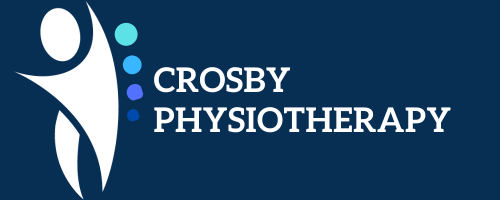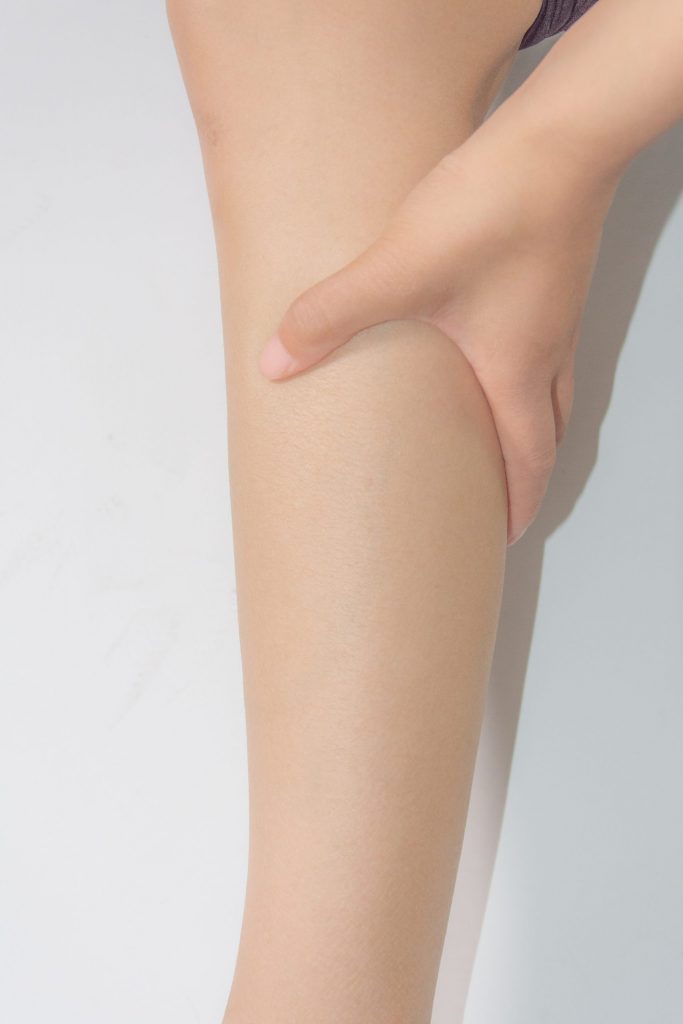Calf Pain is a common presenting complaint and if not managed appropriately, can persist for months or recur, causing frustration to the patient. Most pain stems from injury to the calf muscle, which involves the gastrocnemius and the deeper soleus muscles. These muscles have a joint tendon, the Achilles, which inserts into the calcaneus (heel bone).
Gastrocnemius Muscle Strains
Acute Strain
This occurs typically when the athlete attempts to accelerate from a stationary position, such as when playing football, tennis or squash. The athlete complains of an acute, stabbing or tearing sensation, usually either at the medial belly of the gastrocnemius or at the musculotendinous junction.
Examination reveals tenderness at the site of the muscle strain. Stretching the gastrocnemius also reproduces pain. Assessment of the injured muscle involves asking the patient to perform a bilateral heel raise. If necessary, a unilateral heel raise, a heel drop or hop, may be used to reproduce the pain.
Treatment
Initial treatment aims to reduce pain and swelling with the use of ice, compression, gentle massage and electrotherapy modalities. Crutches may be necessary if the patient is
unable to bear weight. A heel raise should be used on both the injured and uninjured side.
Gentle stretching of the gastrocnemius to the level of a feeling of tightness can begin soon after injury. Muscle strengthening should start as soon as the acute inflammatory symptoms settle, usually after 3-4 days. This involves a progression of exercises, commencing with concentric bilateral calf raises, followed by unilateral calf raise with the gradual addition of weights and, finally, eccentric calf lowering over a step, gradually increasing speed, then adding weights. Low-impact cross-training such as stationary cycling or swimming can be commenced as soon as pain allows.
When active weight-bearing muscle contractions are pain-free, progression to jogging, running and sprinting can commence.
Chronic Strain
This may occur as an overuse injury or following inadequate rehabilitation of an acute injury. Inadequate rehabilitation results in disorganised, weak scar tissue that is susceptible to further injury.
Treatment consists of transverse friction and soft tissue therapy at the site of excessive scar tissue. Stretching serves to restore normal muscle length and stretches should be held for at least 15 seconds. The patient will also be prescribed appropriate concentric and eccentric strengthening exercises.
Soleus Muscle Strains
Although patients with soleus strains can present with sudden onset pain, they commonly report a history of increasing calf tightness over a period of days or weeks.
Examination reveals tenderness deep to the gastrocnemius, usually in the lateral aspect of the soleus muscle. Both the soleus stretch and resisted soleus contraction provokes pain.
Treatment of soleus muscle strains involves the use of heel raises and stretching. Soft tissue therapy is directed at the site of the lesion and once pain-free, appropriate strengthening exercises are commenced.
Neuromyofascial Causes of Calf Pain
The neural component of calf pain can be assessed with the use of a slump test. This may reproduce the patient’s calf pain. If pain is relieved by cervical extension, neural structures may be contributing to the patient’s pain.
The most common source of referred pain is myofascial trigger points in the gluteal muscles. Myofascial pain may present as an episode of sudden sharp pain and mimic a calf strain, as pain of more gradual onset accompanied by tightness, or as muscle cramps. Treatment consists of ischemic pressure or dry needling to the trigger points followed by muscle and neural stretching. The joints of the lumbar spine may also occasionally refer pain to the calf.
Conditions Not to be Missed
Deep vein thrombosis occurs occasionally in association with calf injuries. The post-injury combination of lack of movement, disuse of the muscle pump and the compressive effect of swelling may all lead to venous dilatation, pooling and a decrease in the velocity of blood flow. Certainly, athletes who sustain a calf muscle injury should avoid long airplane flights in the days after injury.

